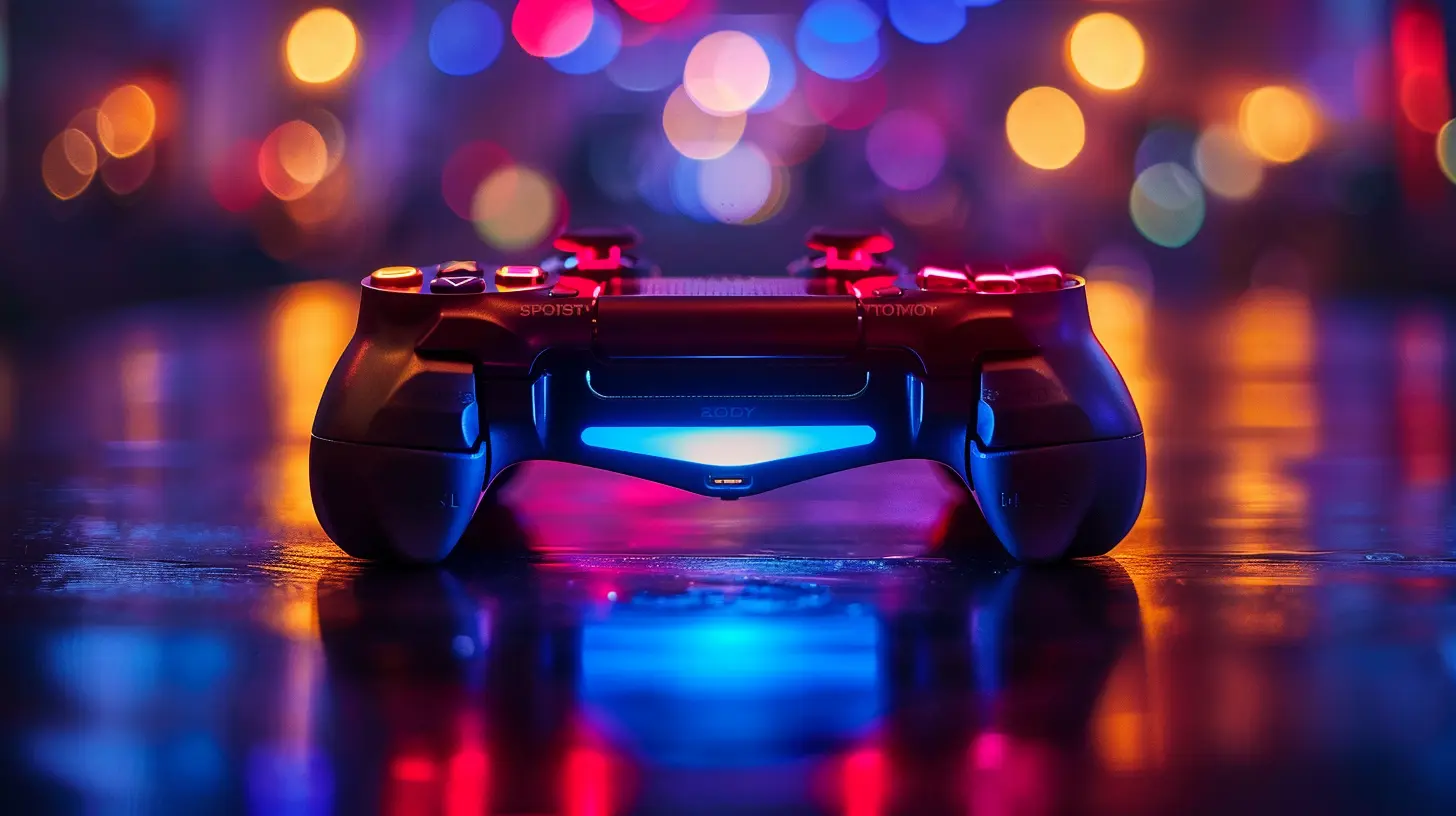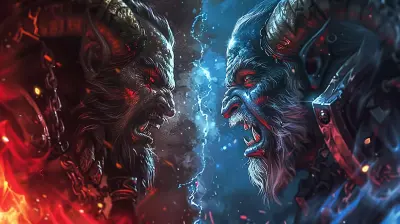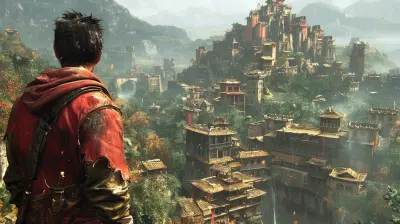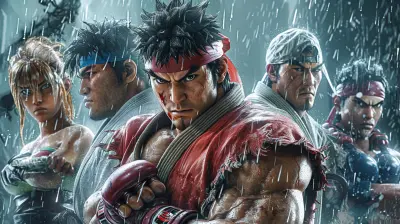Spectator Experience: How Gaming Tournaments Engage Non-Players
1 July 2025
Gaming tournaments are no longer just for the hardcore players battling it out for glory and prize money. Nope, they’ve transformed into full-blown spectacles, pulling in millions of viewers who might not even know the difference between a tank and a support character. Think about it for a sec—why would someone spend hours watching other people play video games? Sounds weird, right? But somehow, it works. The spectator experience in gaming has become an art form, captivating non-players and creating a community that thrives on more than just gameplay.
So, how exactly do these tournaments manage to engage non-players? Let’s dive deep into this fascinating world of competitive gaming and unravel the magic behind it.
The Rise of eSports Spectatorship
If you think video games are just about sitting in your room and button-mashing solo, you're way off. Gaming tournaments—more commonly known as eSports—have exploded in popularity over the last decade. We’re talking about massive events like The International (Dota 2), League of Legends World Championship, and Fortnite’s World Cup. These aren’t just any events—they fill arenas like Madison Square Garden, and millions tune in online.The crazy part? A huge chunk of viewers aren’t even hardcore gamers. Some don’t even game at all. They’re there for the entertainment, the storylines, the camaraderie. It’s not that different from non-athletes watching the Super Bowl or people who have never touched a basketball obsessing over the NBA Finals. Gaming tournaments have figured out how to appeal to everyone, not just the joystick junkies. 
The Thrill of the Narrative
Ever notice how sports aren’t just about the gameplay? It’s also about the stories: underdogs rising to the top, rivalries heating up, comeback victories that leave you on the edge of your seat. Gaming tournaments have cracked this code and turned their players into characters in an epic drama.For example, imagine one player—a scrappy rookie fresh on the scene—going up against a seasoned veteran who has dominated the game for years. Add some intense commentary and maybe a slow-motion replay of a clutch move, and boom! You’ve got a narrative that hooks even someone who doesn’t know the rules of the game. It’s kind of like watching a reality show, except instead of audition tapes and confessionals, you’re getting high-skill gameplay and jaw-dropping stunts. 
Production Value That Rivals Hollywood
Let’s talk about the sheer production value of modern gaming tournaments. These events aren’t just a bunch of people in a dark room with LED keyboards. Oh no. They resemble rock concerts or blockbuster movie premieres. We’re talking insane light shows, booming sound effects, massive LED screens, and even fireworks.Take the League of Legends World Championship, for instance. Riot Games, the developers behind League, go all-out every single year. Past events have featured augmented reality dragons flying above the audience, live musical performances, and opening ceremonies worthy of the Olympics.
For non-players, this kind of spectacle is impossible to ignore. You don’t need to know how the game works to appreciate the sheer scale of what’s happening. It’s a feast for the senses, and let’s be real—who doesn’t love a good show?
Shoutcasters: The Hype Machines
Now, let’s talk about the real MVPs of gaming tournaments: the shoutcasters. These are the folks on the mic narrating the action, breaking down strategies, and hyping up the audience. They’re part sports commentators, part entertainers, and part educators.For non-players, shoutcasters are a godsend. Don’t know why the crowd just erupted in cheers? No problem—the caster’s got you covered. They’ll explain the play, add some drama, and even throw in some humor to keep things light. It’s like having a tour guide in a foreign country: they translate the experience into something you can understand and enjoy, even if you’re totally new.
Community and Camaraderie
Another thing that draws non-players into the world of gaming tournaments is the sense of community. Being a part of something bigger than yourself is a universal human desire—one that gaming tournaments fulfill beautifully.Even if you don’t play the game, you can cheer for a team, root for an underdog, or celebrate a crazy highlight with the rest of the crowd. Events like these have a way of making you feel connected to strangers, whether you’re attending in person or watching a livestream on Twitch or YouTube.
And let’s not forget about the memes. Gaming tournaments are meme factories. A hilarious fan sign, a player’s goofy reaction, or an unexpected in-game blunder can go viral instantly. Sharing these moments online only amplifies the fun, pulling in even more people who might not have even known the event was happening.
Accessibility: No Skills? No Problem.
Here’s a big one: you don’t have to be good at gaming—or even play at all—to enjoy watching a tournament. Thanks to casual commentary, visually stunning graphics, and a focus on storytelling, gaming tournaments are designed to be accessible to everyone.Ever tried explaining cricket to someone who’s never seen a game? It’s a nightmare. But gaming tournaments are different. The basics are often easy to grasp after just a few minutes of watching, and the entertainment factor keeps you hooked even if you don’t fully understand the nitty-gritty.
Digital Streaming: The Ultimate Gateway
Let’s face it—most of us aren’t hopping on a plane to attend a gaming tournament in person. But with platforms like Twitch, YouTube, and Facebook Gaming, you don’t have to. Tournaments are streamed live for free, meaning anyone with internet access can tune in. That’s a massive win for casual spectators, who can watch from the comfort of their own couch.And the best part? These streams often have chat rooms where viewers can interact in real time. Sure, chats can get chaotic (and occasionally toxic), but they’re also a goldmine for shared excitement, memes, and camaraderie. Feeling like you’re part of the event—without actually being there—is one of the main reasons people keep coming back for more.
The Merch and Swag Factor
Oh, and let’s not forget the merch. Gaming tournaments know how to market themselves with exclusive swag. Jerseys, hoodies, mousepads, hats—you name it. Even if you’re not a gamer, owning a piece of branded gear makes you feel like you belong.It’s kind of like how people wear band tees to rep their favorite artists. You don’t need to play Fortnite to think a sleek Fortnite hoodie looks cool. And the merch isn’t just about looking good; it’s also a conversation starter. Fans love sharing their passions, and wearing tournament gear is a super easy way to connect with others.
The Future of Spectator Gaming
Looking forward, the line between spectators and players is only going to blur further. New technologies like virtual reality (VR) and augmented reality (AR) are already being incorporated into gaming tournaments, offering more immersive experiences. Imagine being able to “step inside” the game world as a viewer—how cool would that be?Plus, as gaming continues to grow in cultural significance, we’re likely to see even more partnerships with mainstream media. Think Netflix documentaries, celebrity appearances, and crossover events. The possibilities are endless, and all they do is bring in more non-players who just want to be part of the fun.
Why It Works
At the end of the day, gaming tournaments engage non-players because they’re about so much more than the games themselves. They’re about stories, emotions, spectacle, community, and fun. Even if you’ve never held a controller in your life, you can still be moved by a well-timed clutch play, laugh at a funny moment, or cheer along with the crowd.It’s like going to a concert for a band you’ve never heard of—you might not know all the lyrics, but the energy, the passion, and the vibe can still sweep you away. That’s the magic of gaming tournaments, and that’s why they continue to grow, reaching audiences far beyond the players themselves.
all images in this post were generated using AI tools
Category:
TournamentsAuthor:

Audrey McGhee
Discussion
rate this article
2 comments
Delia McNaughton
This article highlights the innovative ways gaming tournaments engage non-players, showcasing vibrant community interactions and the thrill of competition. It's a compelling look at how these events can unify diverse audiences beyond just gameplay.
October 2, 2025 at 2:53 AM
Orionyx McNair
Gaming tournaments transcend traditional boundaries, creating a vibrant spectator culture. By blending narratives, community interaction, and live spectacle, these events engage non-players, fostering a shared enthusiasm that enriches the gaming ecosystem and broadens its appeal.
July 6, 2025 at 4:54 PM

Audrey McGhee
Absolutely! Gaming tournaments not only entertain but also unite communities, bridging the gap between players and spectators and enhancing the overall gaming culture.


